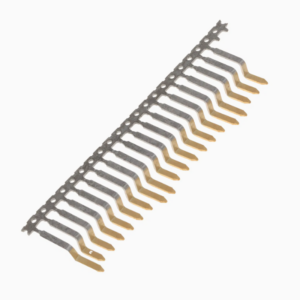Shields
What is Electromagnetic Interference
Electromagnetic interference (EMI) disrupts device performance, transmission channels, or systems due to electromagnetic disturbances. When occurring within the radio frequency spectrum, it's termed radio frequency interference (RFI).
EMI emerges from nearby devices emitting signals, such as microwaves, cordless phones, sensors, and Bluetooth speakers in household settings. Its adverse effects include:
blocked signals
data loss
equipment failure
irreparable damage
With the proliferation of products containing sensitive electronic components, incidents of device failures due to electromagnetic interference are increasing. Our EMI shielding components offer the most effective protection against EMI, ensuring the reliability of your devices.
Our Benefits Of Shields
We offer extensive co-design capabilities for both EMI and non-EMI applications, coupled with precision thin metal stamping capabilities. Our team of engineers and scientists collaborates directly with clients to co-develop application design solutions, providing predictive modeling services as needed (such as Finite Element Analysis FEA, EMI modeling, and deep drawing simulation) to ensure first-time correctness. Once part designs are finalized, prototype centers are available in each region for rapid delivery of prototype products for validation before mass production. Additional features include a variety of plating options, laser welding of different metals, application-specific coatings (such as dielectrics), application-specific materials (such as interface materials), and compliance with strict cleanliness requirements.
When you choose us for your custom shields needs, you will get many benefits that such as:
Wide range of sizes (ovals, rounds, tall and small)
Diamond imprints
Knurl patterns
Split and Butt seams
Minimum and/or zero gap and interlocking features
PCB
Perfect for heat shields
Radio frequency
Tight coplanarity tolerances
Different metal substrate options
Different plating options
Different cover to frame locking options
Vented and unvented options
Tape and Reel packaging
Metal Stamping Design Features
Stamping design features include:
Bi-Metal
Coated
Compliant Pin (eye of the needle)
Countersunk Holes
Embossed
Enameled
Eyelets
Formed
Heat-Treated
IDC Slots
Injection Molded
Insert Molded
Multiple Stamping
Powder Coated
Precious Metal Plated
Threaded
Tuning Forks
Welded
Post-Stamping Operations
In addition to our manufacturing capabilities, we provide a range of post-production processes to ensure the completion of finished parts before packaging and delivery. These operations include
Anodizing
sandblasting
painting
powder coating
plating
silk printing
brushing
polishing,
laser engraving
Materials
Aluminum
Brass
Bronze
Carbon Steel
Copper
Hardened Steel
Inconel
Iron
Nickel
Stainless Steel
Steel
Tin
Titanium
Tool Steel
PLATING MATERIAL FINISHES
We provide various pre- and post-plating options for metal stamping assemblies to allow for corrosion protection, electrical conduction, decorative use, wear resistance, coloring, bonding, and lubricity. You can choose between overall plating, select plating, or spot plating application. Plating material finishes include:
Copper
Nickel
Tin-Lead
Tin
Palladium
Palladium-Nickel
Silver
Gold
Zinc
STAMPING ASSEMBLY HARDWARE AND PART INSTALLATIONS
For assembled applications, parts may require joining of metal hardware, plastic parts or metal inserts. Examples of assembly hardware and part installations are:
Plastic Pieces
Metal Inserts
Fasteners
Screw Machine Parts
Bushings
Nuts
Studs
The Process For Packing
Carton
Wooden case
Wooden pallet
Plastic pallet
Wire basket
Woven bag
Dedication to Quality
Our unwavering commitment to quality underscores our dedication to meeting and exceeding our customers' expectations. We strive to enhance customer satisfaction by continually enhancing our products, processes, services, and quality management system. Demonstrating our steadfast dedication to quality, we employ a range of testing and inspection methodologies, including:
Failure Mode and Effects Analysis (FMEA) to prevent potential failure points.
Adherence to the rigorous Production Part Approval Process (PPAP) for stringent compliance standards.
Implement Advanced Product Quality Planning (APQP) to ensure production stability and consistency.
Moreover, our certification under ISO9001 and IATF 16949:2016 underscores our commitment to delivering precise, high-quality products, further instilling confidence in our customers



